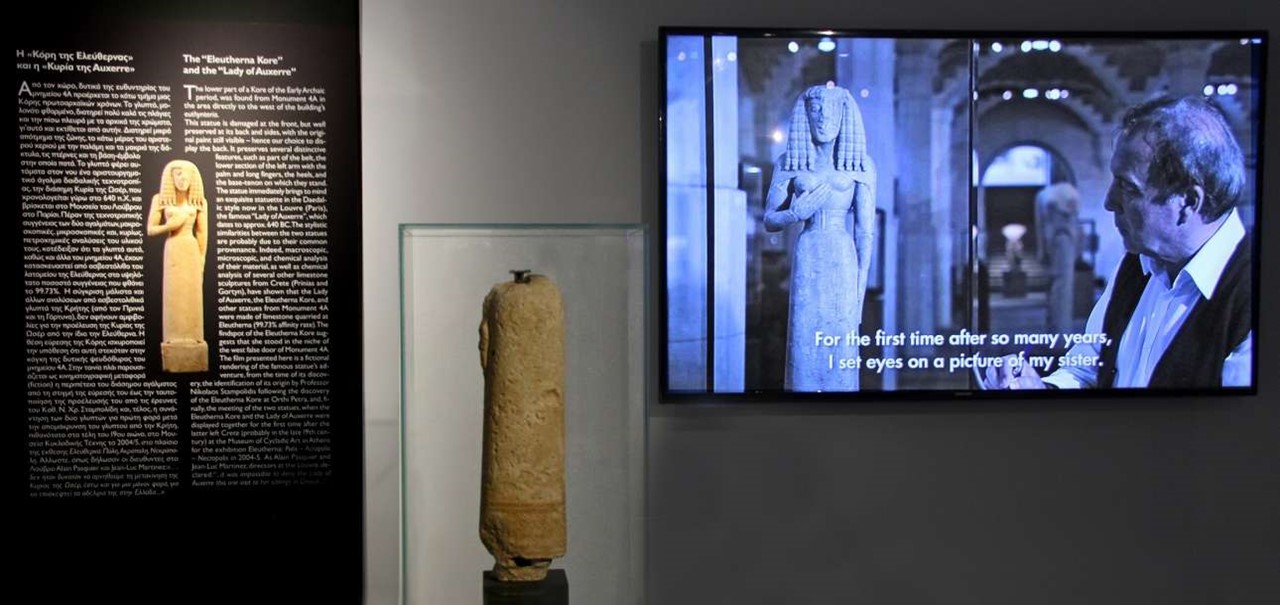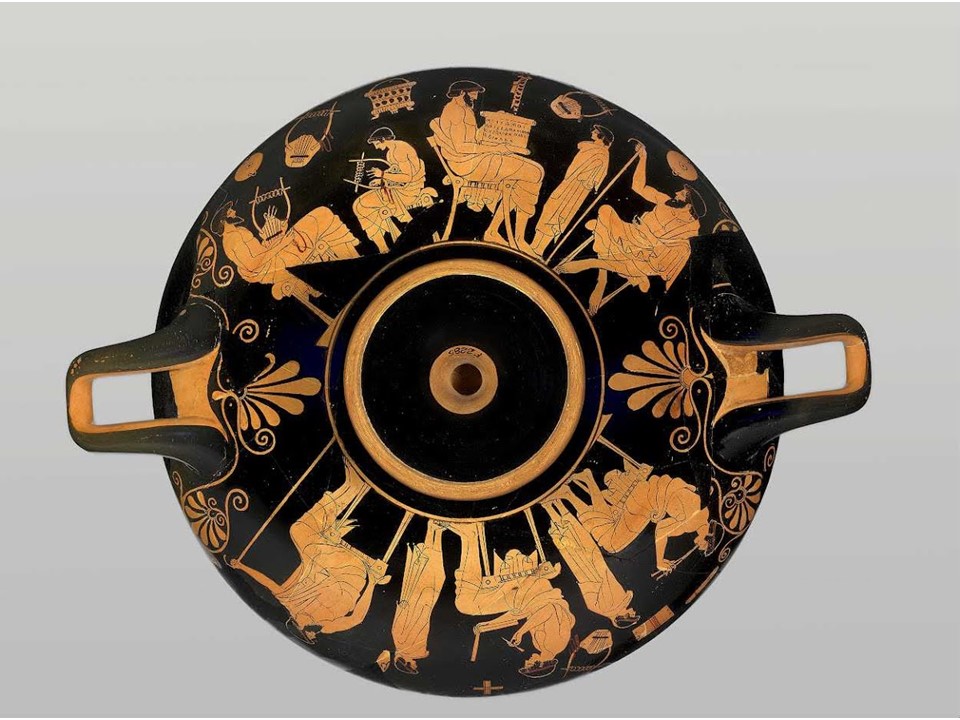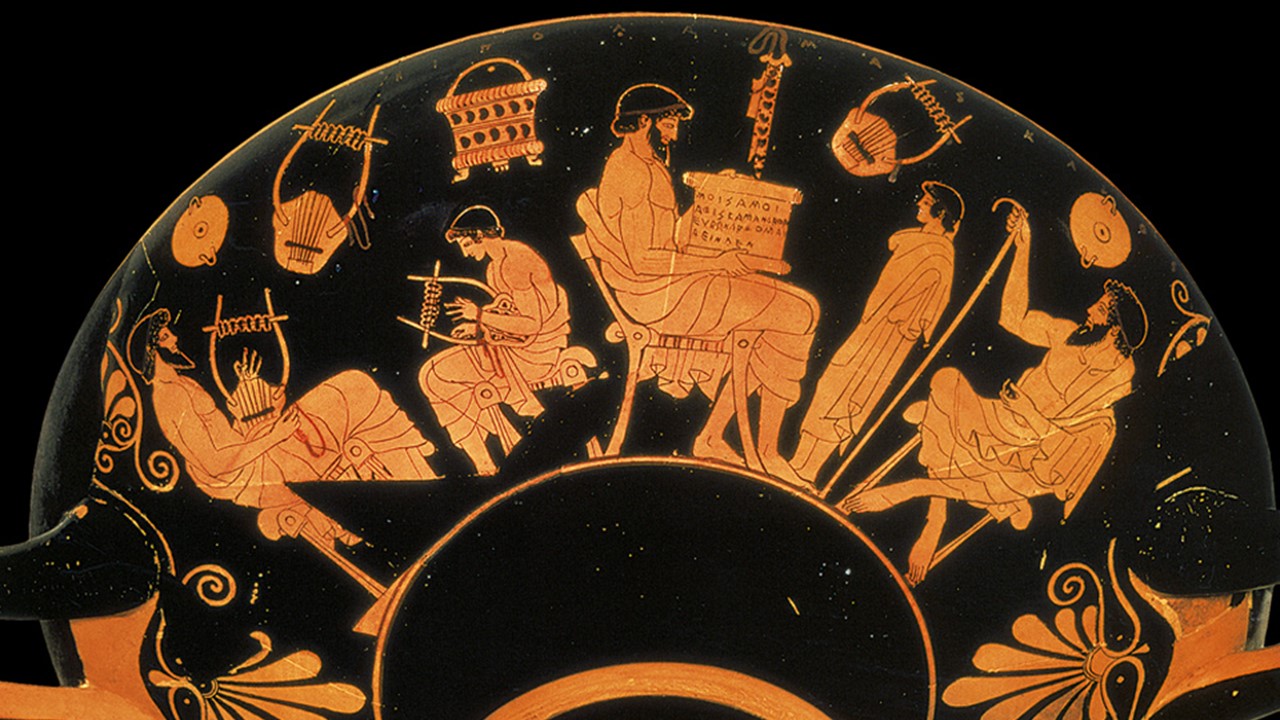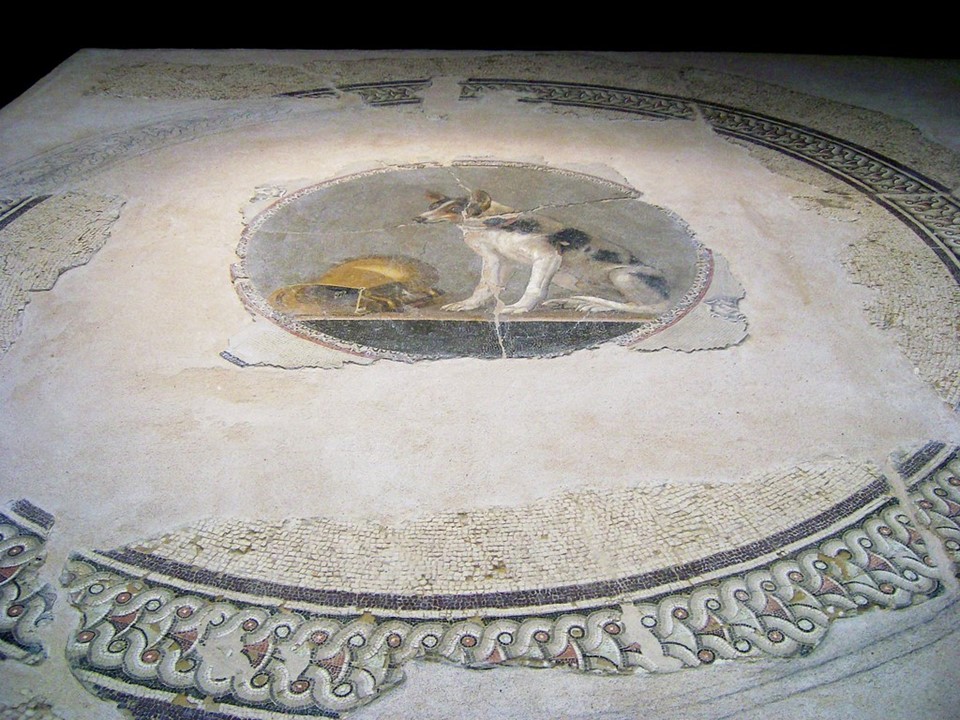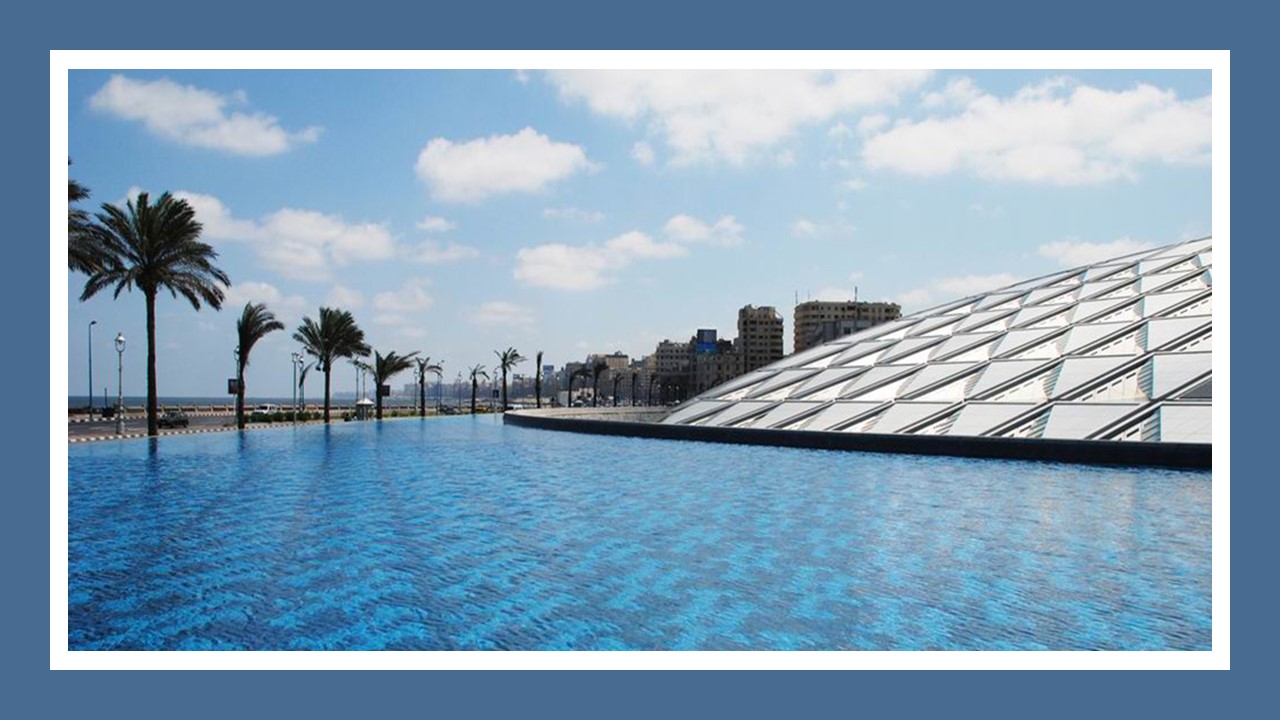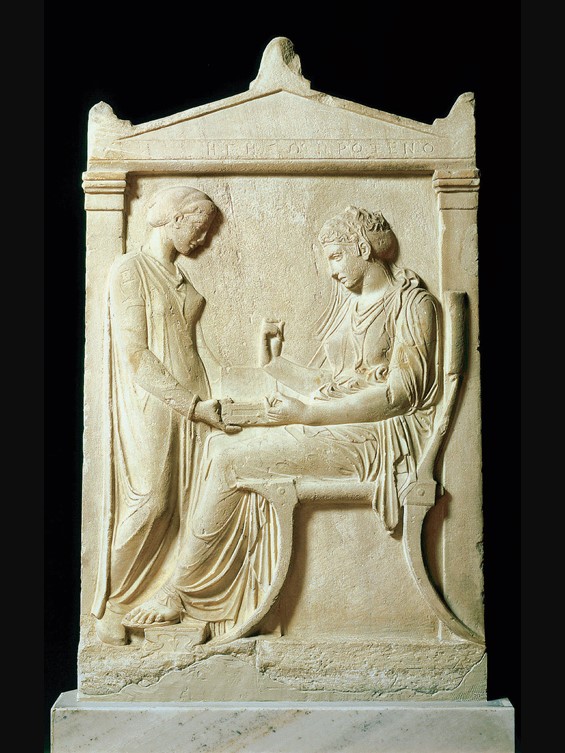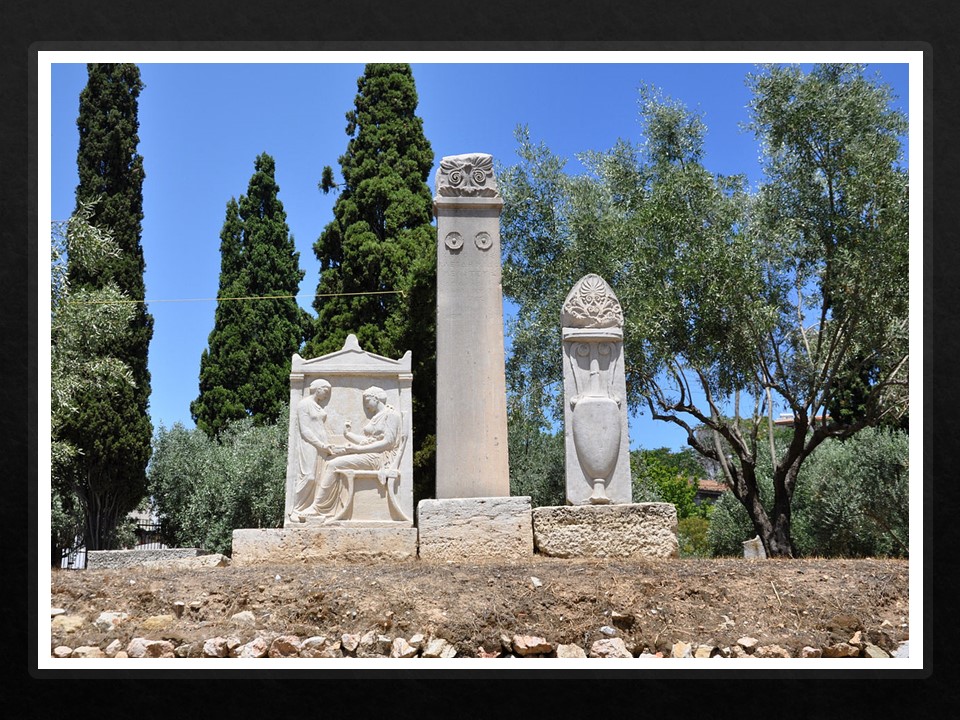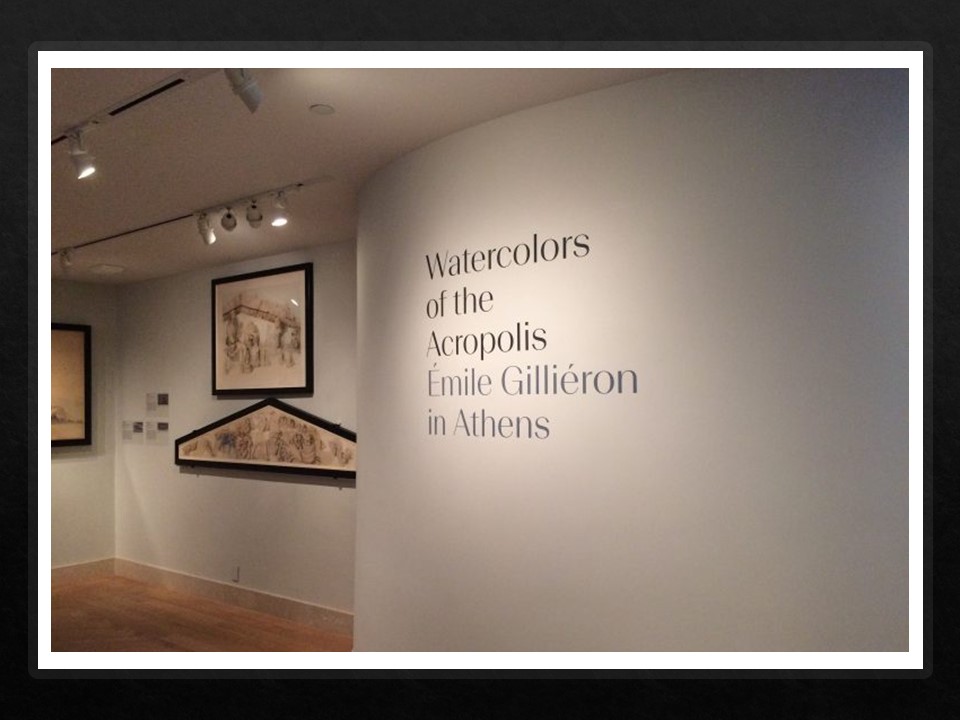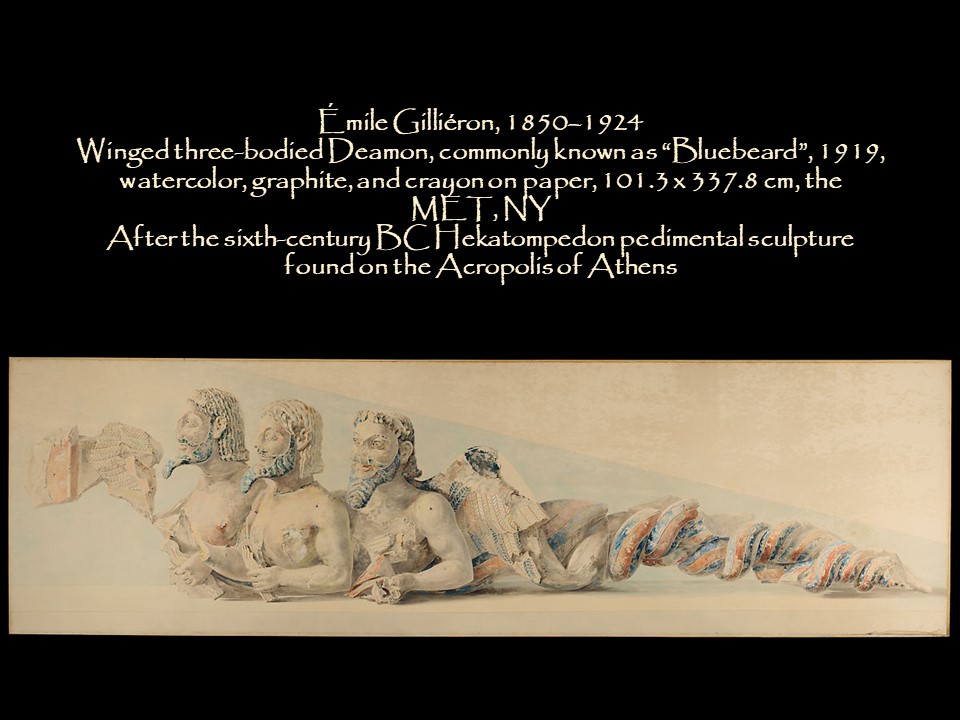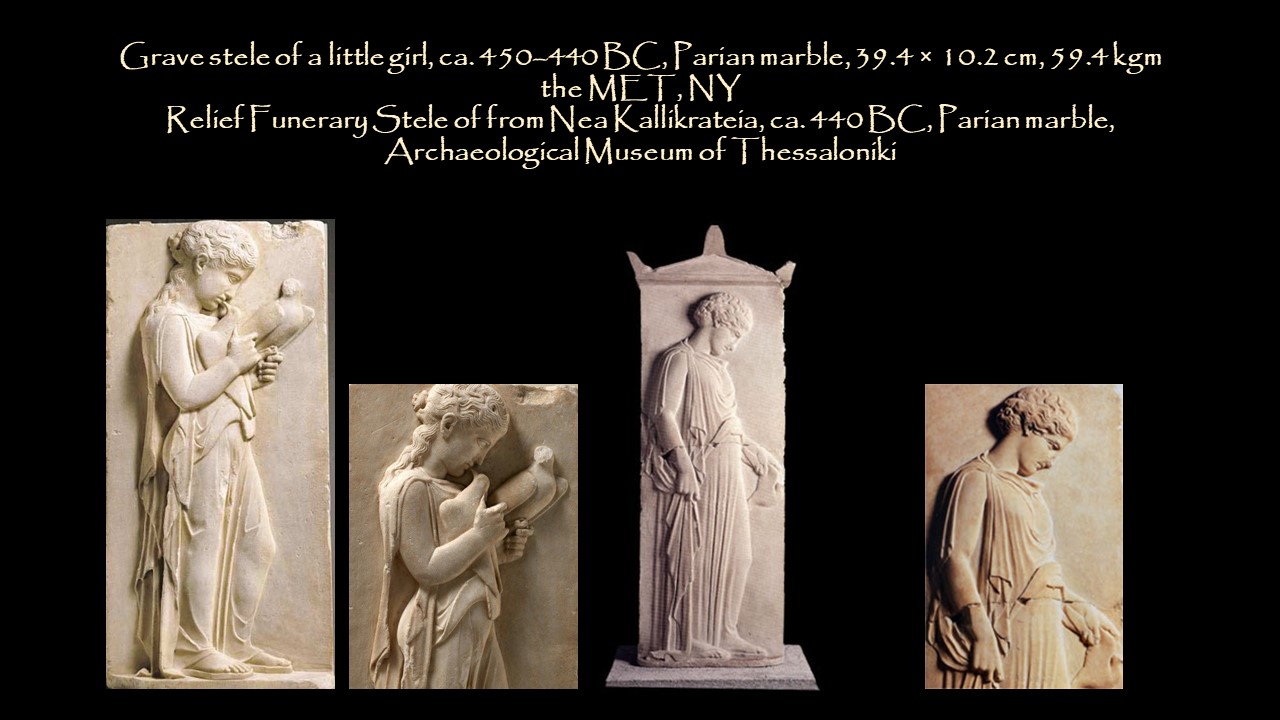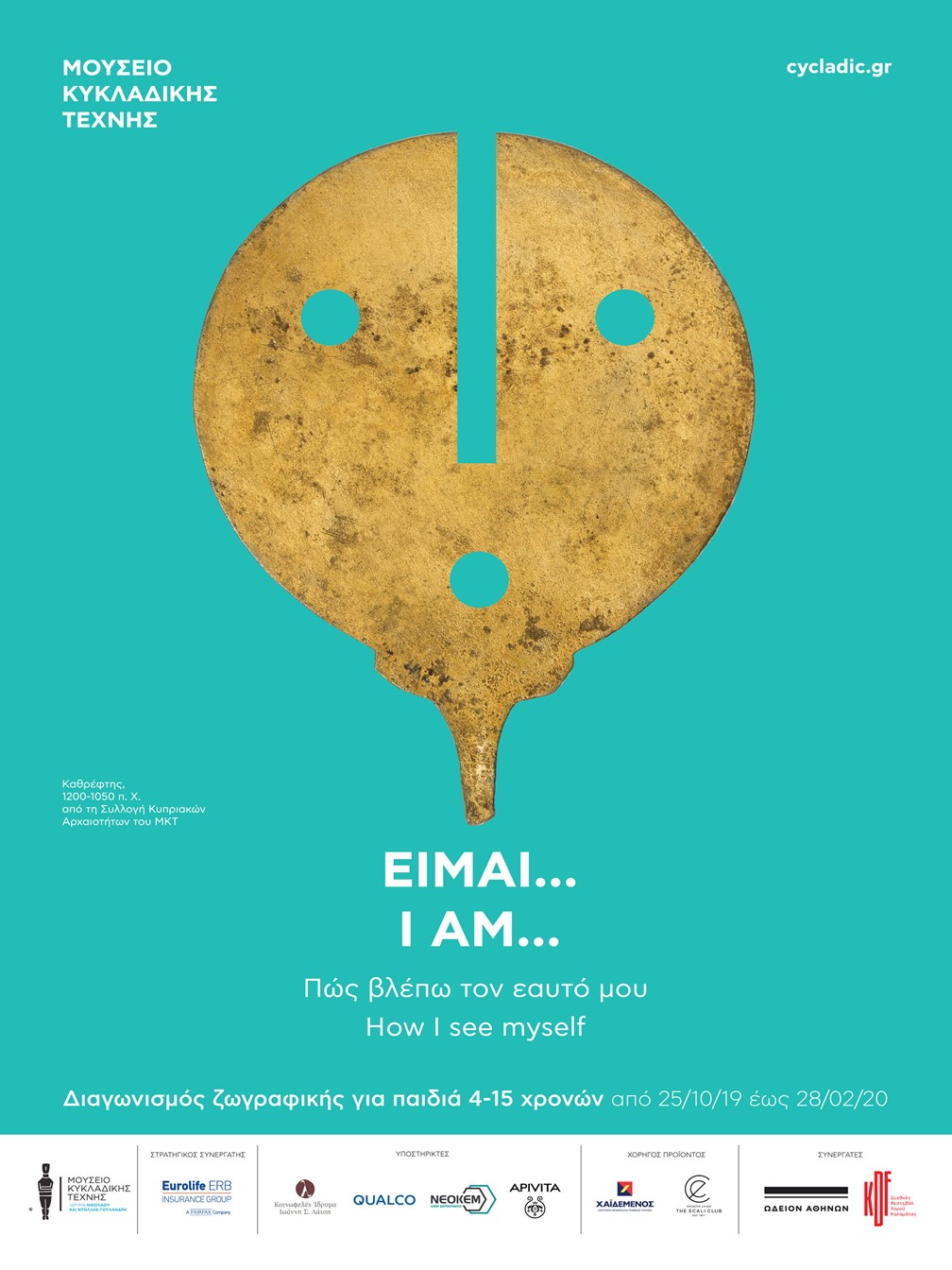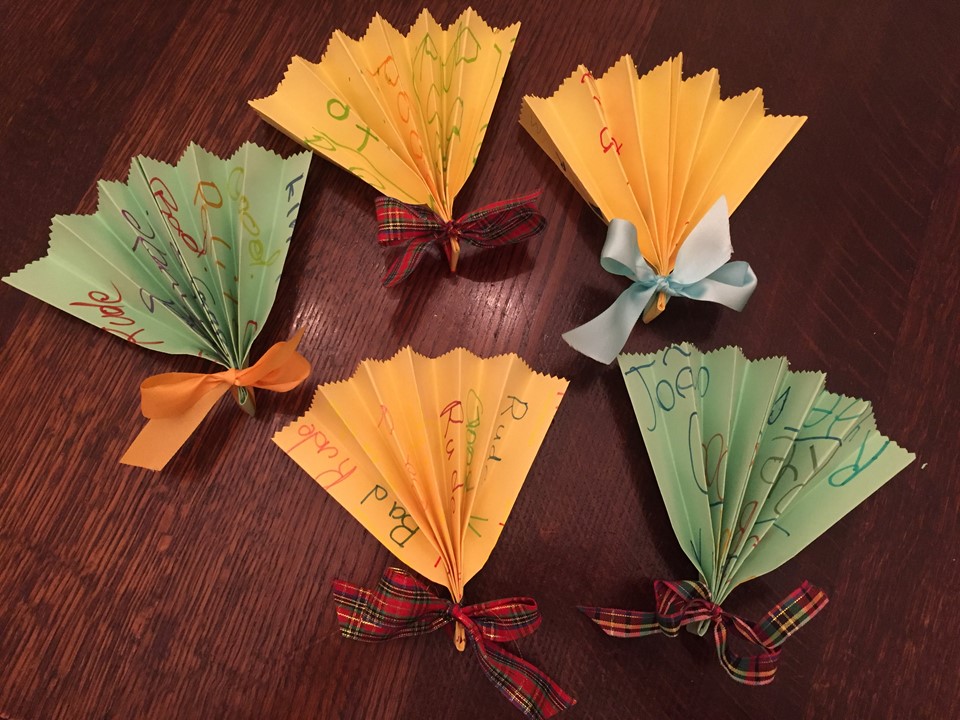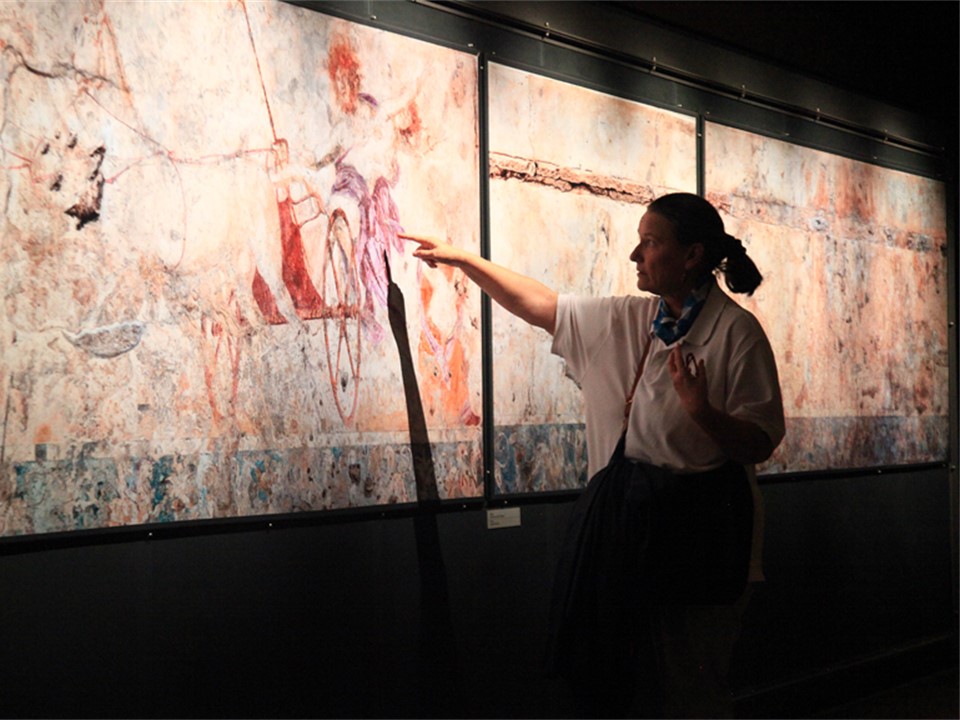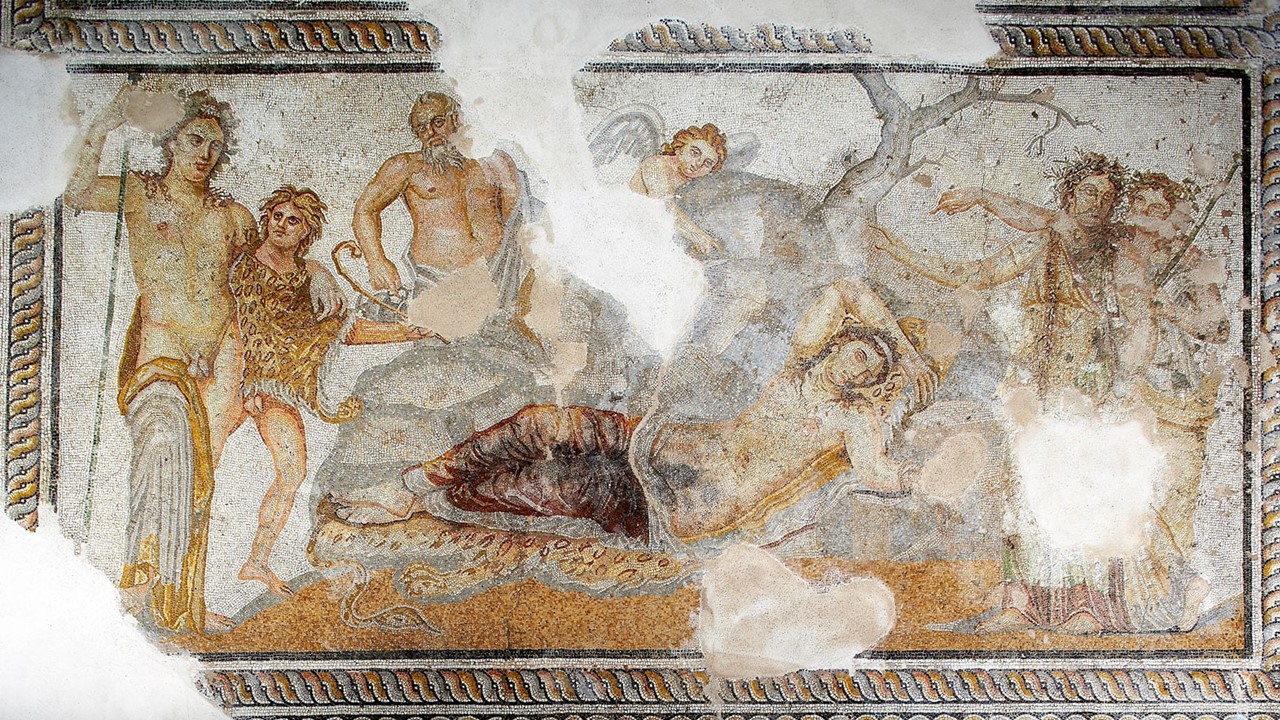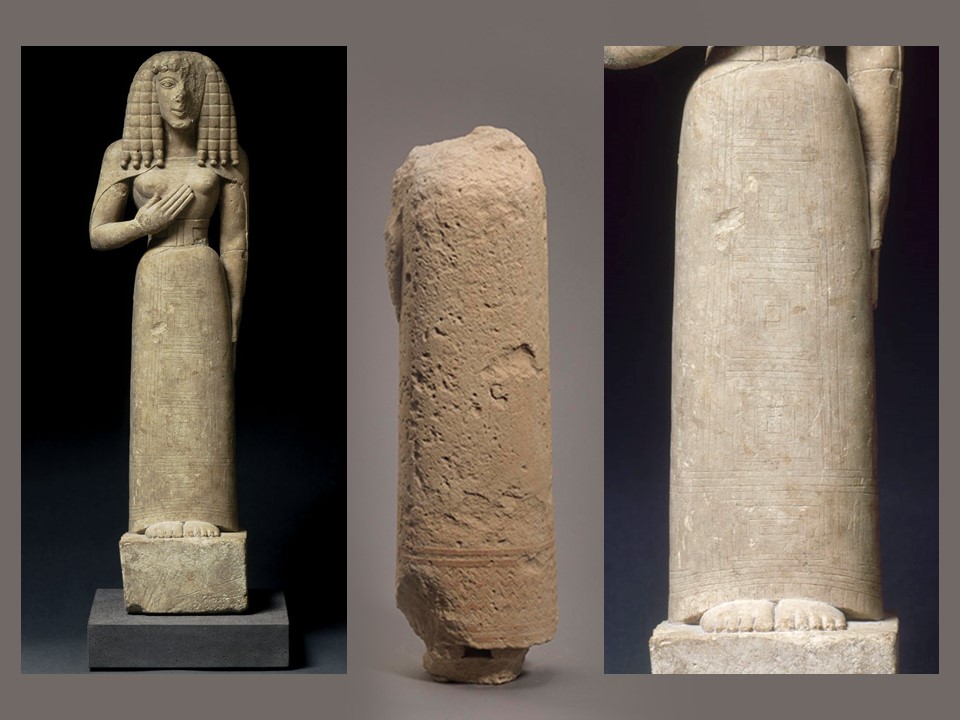
Daughter of Eleutherna, 7th century BC, limestone statuette, the surviving height of 60 cm, so a total of about one meter, Museum of Ancient Eleutherna
https://www.akg-images.com/archive/Dame-d%E2%80%99Auxerre-2UMDHUH75U8W.html
http://en.mae.com.gr/exhibits.html
https://burgondiart.wordpress.com/2015/02/19/la-mysterieuse-dame-dauxerre-est-elle-vraiment-bourguignonne/
The two statues Professor Nicholas Chr. Stampolidis, so affectionately calls Daughters of Eleutherna, hold me in fascination… “Crete was obviously the most important centre and it is the place where most of the stone sculptures of the Daedalic style originate. In contrast to the works that were directly influenced by oriental standards, the Daedalic sculptures depict mostly feminine forms. They are characterized by a complete frontality, and are represented with the hands placed on the thighs, with the hair combed into horizontal layers that were considered to be wigs -the known layered wig-like hair- usually with their head quite broadened and with clothes without folds. These elements can be seen in the known “Auxerre Kore”, who wears the characteristic large belt and her clothes are decorated with engravings and painted with a geometric pattern…” and, I would like to add, the badly damaged lower part of another Daedalic Kore at the Museum of Ancient Eleutherna. Foundation of the Hellenic World – http://www.fhw.gr/chronos/04/en/culture/321arts_sculp_daedalic.html

Back on December 1, 2004, until September 1, 2005, the Daughters of Eleutherna were exhibited side by side in a Museum of Cycladic Art Exhibition, titled, ELEUTHERNA, whose purpose was to bring together “…the results of systematic excavations conducted by the University of Crete at the site of ancient Eleutherna over the past 20 years… (and) to demonstrate the continuity of human presence and habitation in a city from the Early Bronze Age (3rd millennium BC) to the Middle Ages (12th-13th c. AD), that is, a period of some 4500 years.” This exhibition marked the beginning of a new Lesson Plan for ancient Greek Archaic Art! https://cycladic.gr/en/page/eleutherna

This Lesson Plan uses the Inquiry-based teaching method known as Visual Thinking Strategy introduced by Abigail Housen and Philip Yenawine which “uses art to teach visual literacy, thinking, and communication skills—listening and expressing oneself. Growth is stimulated by: looking at artworks of increasing complexity, answering developmentally based questions, and participating in peer-group discussions carefully facilitated by teachers.” Philip Yenawine, Visual Thinking Strategies: Using Art to Deepen Learning Across School Disciplines, 2013 https://www.amazon.com/Visual-Thinking-Strategies-Learning-Disciplines-ebook/dp/B00XO20380
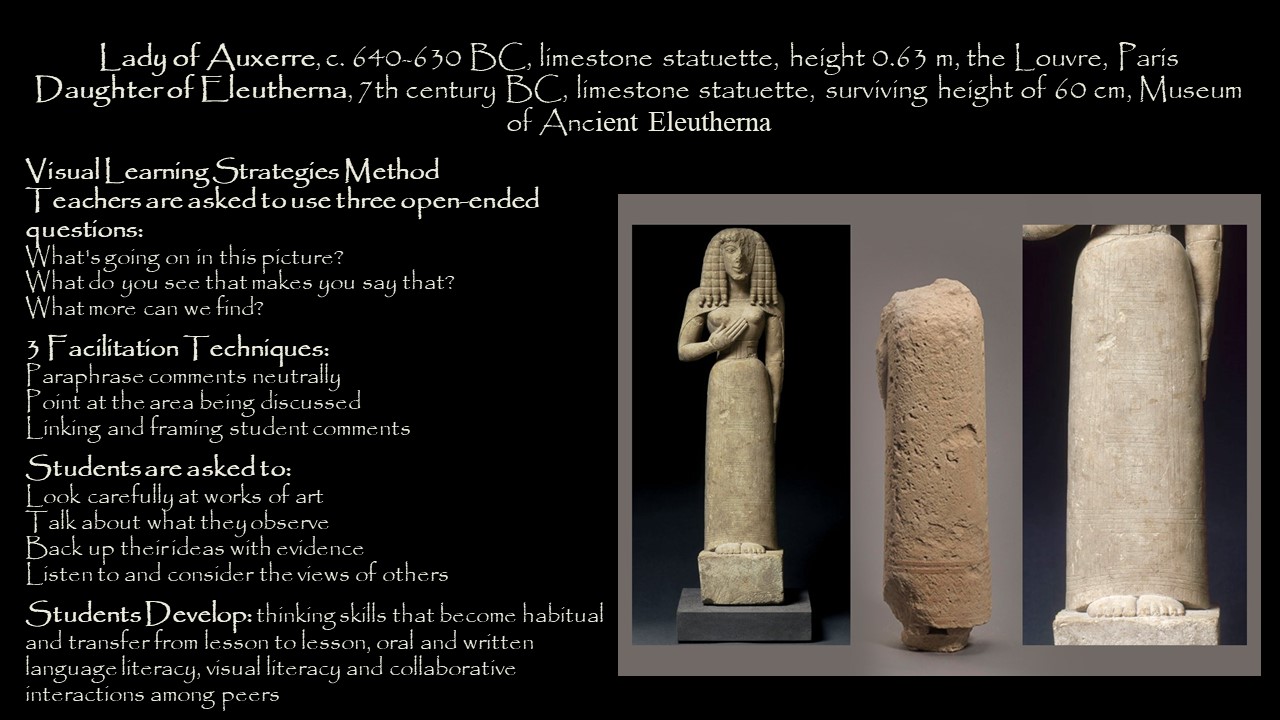
8 Steps to a Lesson Plan Success

Prepare by Reading… https://www.ancient-origins.net/artifacts-other-artifacts/lady-of-auxerre-0010215 and https://www.louvre.fr/en/oeuvre-notices/statue-woman-known-lady-auxerre and https://www.tovima.gr/2008/11/24/culture/h-epistrofi-mias-kyrias/ and http://en.mae.com.gr/museum.html
Introduction Essential Questions: How do we communicate thoughts and feelings in the visual arts? – How do the arts of each period reflect the values of the culture? and Goals: Help students understand the importance of Daedalic Art in the development of Ancient Greek Sculpture – Assist students to connect the past with the present
Visual Learning PP: Show students what PP “teachercurator” has prepared, please… Click HERE!
Be Inquisitive 1: Ask Visual Learning Strategy Questions… and conduct a constructive conversation
Visual Learning Video: Show students the following Video titled “HALL B: THE LADY OF AUXERRE” directed by Andonis Theocharis Kioukas for the Museum of Ancient Eleutherna http://en.mae.com.gr/films.html
Be Inquisitive 2: Ask Questions… on the information provided by the Video on the Lady of Auxerre
Enduring Understanding: Daedalic Sculpture was the 1st step in the development of Ancient Greek Sculpture.
Assessment Activity: For an RWAP Activity, please… Check HERE! (RWAP stands for Research-Writing-Art-Project)
